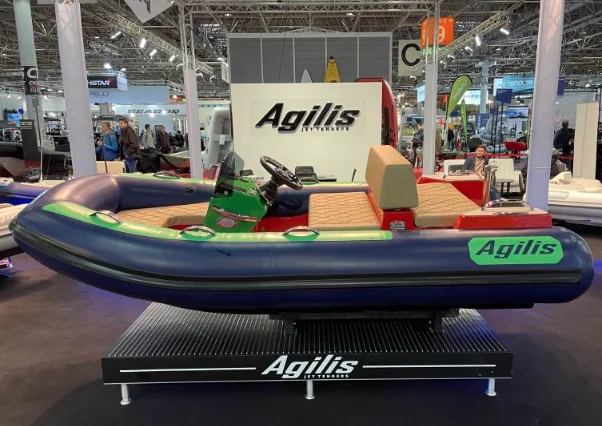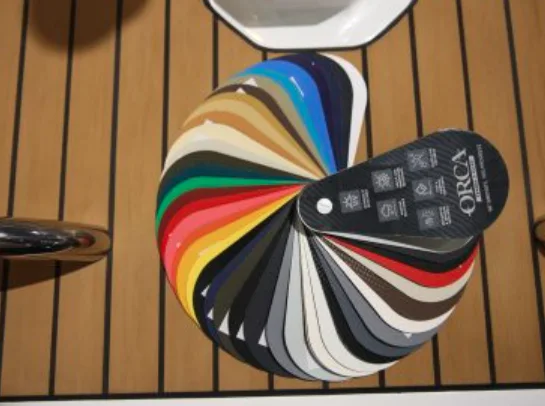The series of the articles on jet tender design details by Agilis.
Upon first glance at the boat, what stands out are the color and texture of its tubes. Therefore, let us delve into determining the optimal material for jet tenders.
Inflatable boats commonly use PVC and Hypalon as their primary materials. While each possesses distinct advantages, they also exhibit notable differences. Let us explore these disparities further.

PVC (Polyvinyl Chloride) is a lightweight, inexpensive, and versatile material that is commonly used in inflatable boats. It is a thermoplastic material that is manufactured by combining vinyl and plasticizers, which gives it the necessary strength and abrasion resistance for use in inflatable boats. PVC is often used in non-professional or lower-priced mass-market boats because it is less expensive than Hypalon.
One of the main advantages of PVC is its flexibility, which allows it to be easily folded and stored. Additionally, it is lightweight, making it easy to transport and launch. However, one of the biggest disadvantages of PVC is its sensitivity to UV radiation and high temperatures.
In warm climates, PVC can become brittle and degrade quickly, reducing the lifespan of the inflatable boat. Additionally, PVC is not as resistant to chemicals as Hypalon, which can cause it to deteriorate over time. PVC is also not eco-friendly, as it contains toxic chemicals that can harm the environment during production and disposal.
Hypalon, on the other hand, is a synthetic rubber material that is extremely durable and resistant to weather, chemicals, and UV radiation. It was first developed by DuPont in the 1950s and was widely used in military and commercial applications due to its high resistance to extreme conditions. Hypalon has since been adopted by other manufacturers and is still a popular material for inflatable boat tubes.
One of the main advantages of Hypalon is its resistance to UV radiation, making it ideal for use in hot and sunny climates. Additionally, it is more resistant to chemicals than PVC, making it less likely to deteriorate over time. Hypalon is also easy to repair, as it can be patched with a simple adhesive.
However, one of the main disadvantages of Hypalon is its higher cost compared to PVC. It is also heavier than PVC, which can make it more difficult to transport and launch.

When selecting a manufacturer for inflatable boat tubes, it is important to choose one with a reputation for producing high-quality materials. Agilis,Agilis has opted for ORCA® among a variety of manufacturers, citing the following reasons:
- Their fabric is specifically designed for professional and recreational inflatable boats that endure frequent exposure to sun, sea, and salt.
- The material is available in over 30 colors and offers four distinct surface finishes.
- ORCA® boasts numerous international certificates and awards, attesting to the quality of their products.
Agilis is renowned for providing yacht jet tenders made from premium, long-lasting, and secure materials. Additionally, do not overlook the option to choose from various Hypalon color combinations for your upcoming tender using our Configurator.
Conclusion
When selecting the best material for inflatable boat tubes, it is essential to consider the intended use and environment, as well as the material’s durability, UV resistance, temperature tolerance, ease of repair, and cost. While both PVC and Hypalon have their advantages and disadvantages, Hypalon is generally considered to be the superior material due to its excellent UV resistance and durability.

